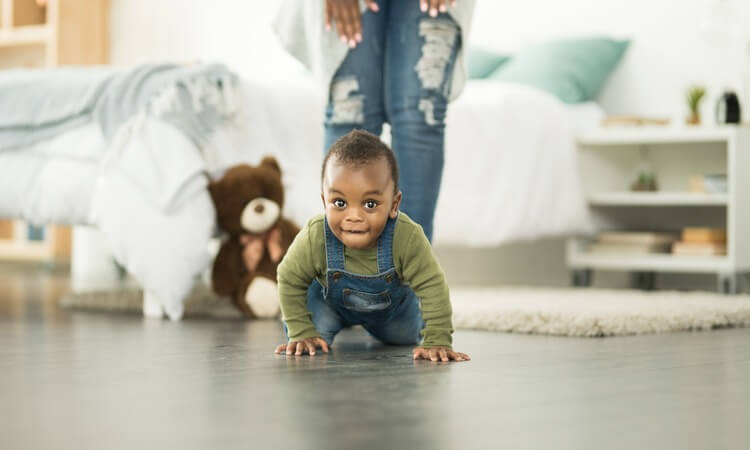Childproofing Your Home is an important aspect of parenting that cannot be ignored. Keeping your little ones safe and protected is the top priority for any parent, and childproofing your home is one of the best ways to ensure that your child remains safe and secure. By taking the time to childproof your home, you can reduce the risk of accidents and injuries, and create a safe and secure environment for your child to grow and play.
In this article, we will take a closer look at the steps you can take to childproof your home, and provide tips and advice to help you keep your child safe and protected.
1. Install electrical outlet covers.
Unfortunately, electrical outlets can be the ideal height for young fingers to play with. Install outlet covers if an outlet is not in use. There are spring-loaded designs available that keep toddlers from messing with the outlet while still allowing you to use it effortlessly.
2. Use furniture bumpers.
Once a youngster learns to walk, furniture such as nightstands, coffee tables, and other items become a constant threat. When your child collides with something in your living room, furniture bumpers and cushions help soften harsh edges and round out sharp corners to lessen the impact. Furniture bumpers are available in a variety of colors and as clear alternatives, so they won’t interfere with your design concept.
3. Use gates at the top or bottom of the stairs.
While some parents use one baby gate and move it to the top or bottom of the stairs depending on where their child is, it is safer to place one gate at the top and one at the bottom. If you buy appealing swinging gates, you can simply keep them up until your youngster is big enough to step over them.
4. Get rid of drawcords.
The draw cord for the blinds may appear harmless enough, but history has shown that small children should never play with them. In particular, looped cables provide a very high danger of strangulation since kids may play with them and become caught in them. By closing the loop, changing the blinds, or installing a device that saves extra cord and keeps it out of your child’s reach, you may reduce this risk.
5. Ensure plants in your house are non-toxic
You might not have considered that the plants in your house could be harmful to kids unless you have a pet. Make sure all the plants in your house are non-toxic before your youngster gets the chance to taste them.
6. Use guards on windows.
Exploring may be risky for kids, especially if they manage to open a window on the second floor. Your youngster won’t be able to tumble out of an open window thanks to window guards. Various guards are available, some with metal bars and others with sturdy mesh. In either case, these barriers can greatly reduce the chance of a fall for your youngster.
7. Living rooms, dens, and offices
You don’t want your kid to pull on anything, chew on anything, or become tangled in anything, especially electrical cords. Make sure all wires are linked together, concealed out of sight, covered, and out of the reach of little hands, including those that are challenging to access, such as those behind your TV.
Duct tape can be used to secure a cord to the floor to prevent it from becoming a toy. To keep cords up against the wall and off the floor, you might also wish to use sticky hooks. Another choice would be to buy baseboard cord channels or electrical cord coverings.
8. Secure all movable equipment
If ever, when did you last move your floor lamp? Anything that isn’t completely stable has the potential to topple, particularly when a kid is scooting around. Spend some time looking over your living area to evaluate what needs to be secured. Anything that doesn’t pass the test has to be either relocated out of the baby’s reach or removed.
9. Mount shelves, dressers, TVs, and desks
Your bookshelf may appear sturdy today, but as a newly mobile toddler begins to pull themselves up on it, everything might come crashing down. Everything, especially tall pieces of furniture, should be wall-mounted. This includes shelves, dressers, TVs, and desks.
10. Use non-slip underlays.
Learning to walk is difficult enough without having to deal with a slick surface. When your toddler gets on their feet, non-slip underlays can help protect your carpets from sliding and tumbling.
Make The Effort to Baby-Proof Your House
When baby-proofing your house, there are a lot of possible risks to consider. But your mobile baby or toddler will be secure as long as you take the time to examine each space from the viewpoint of your little child. At The Centric Moving Company, we share tips and what you need to know about childproofing your home, giving you the peace of mind, you’ll need when raising your busy toddlers.
By following these 10 easy steps, you can childproof your home and create a safe environment for your children. Remember to regularly check your home for potential hazards and make any necessary updates to ensure your child’s safety.


